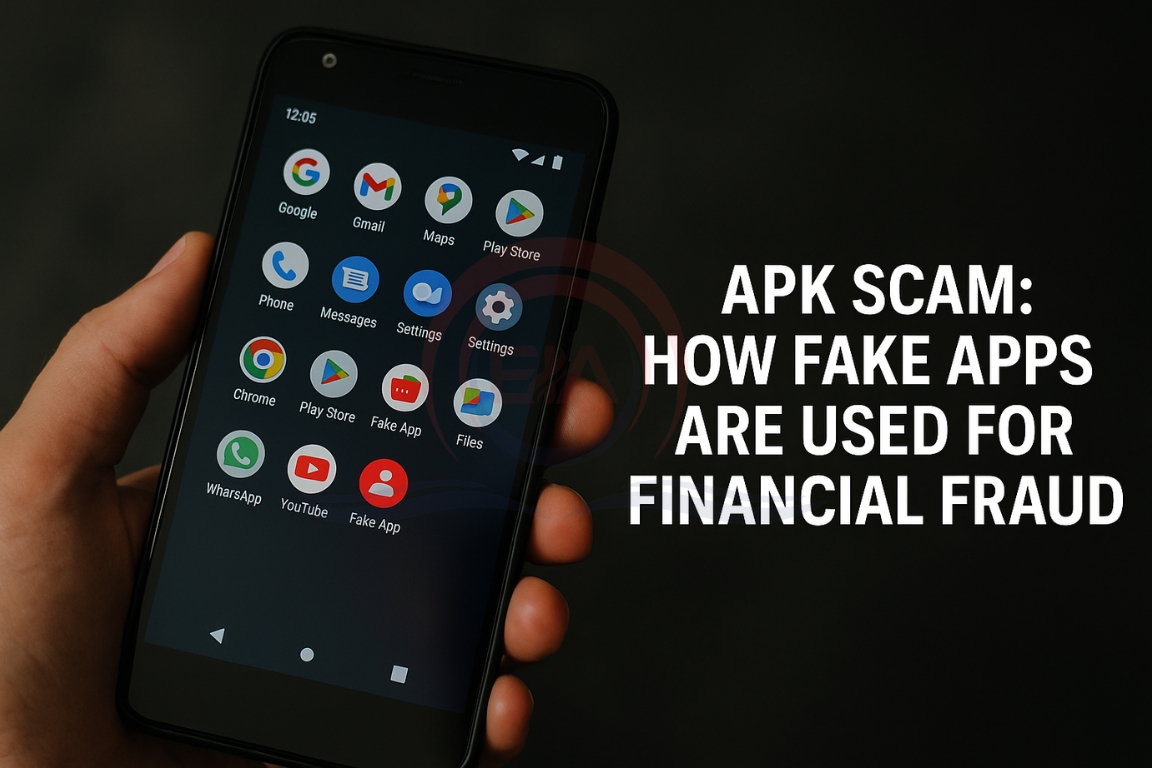The APK scam has emerged as one of the fastest-growing cyber frauds in India, exploiting Android users through fake applications. In 2025 alone, more than 12 lakh such cases have been reported on the National Cyber Crime Reporting Portal.
Introduction
- The digitalisation of financial services has improved convenience but has also widened the scope of cyber threats.
- Among them, Android Package Kit (APK) scams have become a major menace. By using sophisticated social engineering and malware-infected apps, fraudsters trick users into sharing personal and financial information.
- These scams highlight the urgent need for cyber awareness, strict regulation, and robust technological safeguards.

What is an APK Scam?
- APK (Android Package Kit) files are the format used to install apps on Android devices.
- Fraudsters create fake apps that mimic official portals such as banks, government schemes, or tax refund websites.
- These apps carry hidden spyware or malware that can steal data, access OTPs, and compromise banking credentials.
How the APK Scam Works
- APK files function similar to .exe files on Windows, making them vulnerable to misuse.
- Circulation channels – Scam APKs are spread through social media, SMS links, or emails with urgent messages like KYC updates, subsidy benefits, or electricity bill payments.
- Permission abuse – Once installed, the app requests access to contacts, messages, microphone, notifications, and even location.
- Data theft – The app transmits encrypted user data to fraudster-controlled servers, which is later decoded to extract sensitive information.
Rising Threat Landscape
- Between 2021 and 2025, cybercrimes linked to APKs surged by 900%.
- Fraudsters frequently modify names, logos, and URLs to bypass detection even after earlier versions are flagged.
- Use of advanced encryption and dormant malware makes it difficult for antivirus tools and app stores to detect these malicious files.
Key Challenges
- Weak scrutiny of apps – Not every app uploaded online undergoes security checks.
- Mule accounts – Fraudsters use fake identities for hosting and transactions.
- Rapid mutation – Minor tweaks allow the same malicious APK to re-enter the system.
- User vulnerability – Low digital literacy and blind trust in official-looking apps make users easy targets.
Industrial and Digital Growth
- Focus on semiconductors, electronics, renewables, defense, specialty chemicals.
- Production-Linked Incentives (PLI) and Gati Shakti logistics enhance industrial competitiveness.
- Digital infrastructure: UPI and startups boost productivity, formalisation, and exports.
Way Forward
- Projections: By 2038, India may become 2nd largest economy (PPP), with GDP > $34 trillion.
- Growth model emphasizes democracy, inclusivity, and human capital development.
- India’s strategy: Combine reforms, energy security, and technology adoption to sustain rapid and inclusive growth.
Conclusion:
India’s economy demonstrates strong growth, inclusive development, and energy resilience, supported by reforms, infrastructure, and digitalisation, positioning it as a key global economic player.





